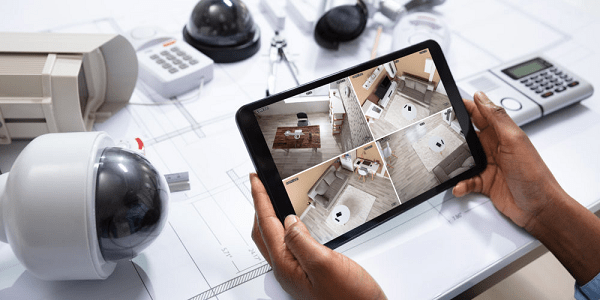
11.9.20 – SSI
The 2020 Campus Safety Video Surveillance Survey sheds light on camera system usage and needs of the education and healthcare markets.
Education and healthcare campuses continue to be big users of security camera systems. That’s according to this year’s Video Surveillance Survey from SSI sister publication Campus Safety. More than nine in 10 (94%) respondents say they have video surveillance solutions installed on their campuses.
More than seven in 10 have one video surveillance system, and of those, 27% want to expand or replace their current system, with healthcare and higher ed respondents expressing the most interest in acquiring a new solution.
More than one in five respondents (22%) have multiple security camera systems with nearly half of them (47%) saying they want to expand or replace their current solutions. Of those respondents, colleges and universities are the most likely to want to get a new system.
Additionally, nearly a third of all respondents (31%) say they are currently using Cloud technology to deliver video surveillance management to remotely monitor their security cameras, with K-12 respondents being the most likely to already be using this technology.
Most Campuses Use Video Systems Daily
The reason for the wide adoption of security cameras at schools, institutions of higher education and healthcare is pretty obvious: campuses use them a lot. Overall, more than eight in 10 (82%) survey respondents say they use their video surveillance systems daily, with more than nine in 10 hospitals using them daily.
More than half (57%) say their security cameras frequently provide evidence for investigations, with another 33% saying video surveillance systems sometimes provide evidence. Drilling down further, hospital respondents say their security cameras frequently (75%) or sometimes (25%) provide evidence in investigations.
Eighty-four percent of respondents frequently (55%) or sometimes (29%) use their security cameras to help them monitor the campus during other situations where safety or security issues could arise, such as weather emergencies, athletic events, concerts, protests and more. With healthcare respondents, that percentage increases to 97% (77% frequently and 20% sometimes).
Nearly one in three respondents (31%) say their video surveillance systems frequently prevent crime. Another 47% say their cameras sometimes prevent crime.
About three in four respondents (73%) say their security cameras frequently (35%) or sometimes (38%) act as force multipliers.
Cameras Monitor a Wide Range of Locations
“Monitoring entrances and exits” is the most common task for security cameras, with nine out of 10 respondents from all three sectors saying their video surveillance systems monitor these locations. Perimeters (83%), parking facilities (75%) and remote areas (66%) are also popular locations for video monitoring. (See below for how campuses use their security cameras.)
There are some significant variations among the types of campuses and their camera applications. More than nine in 10 hospitals monitor their remote areas with security cameras, but only 66% of institutions of higher education and 56% of schools or school districts monitor these locations. Seven in 10 hospital respondents say their campus video surveillance systems monitor off-campus areas, while only 30% of university respondents and 7% of K-12 respondents’ systems do so.
When it comes to using security cameras to see if students, patients, visitors and staff members are wearing facial coverings to prevent the spread of COVID-19, only 12% of K-12 respondents are doing so, while 20% of higher ed and 23% of healthcare respondents are using their video surveillance systems to monitor the wearing of masks.
The verification of visitor identity via cameras is most often done by schools and school districts (43%), while 36% of hospitals and 26% of institutions of higher education use their video surveillance systems to verify guests are authorized to be on campus.
Some of the areas monitored are very campus-type-specific. For example, there is a high rate of video monitoring of emergency room entrances/exits, patient waiting rooms and pharmacies by hospitals, but not by colleges or schools. Likewise, colleges and universities are much more likely to monitor residence halls with security cameras than K-12 campuses or hospitals because most schools and healthcare facilities don’t have student dorms.
Maintaining Video Surveillance Systems Is Critical
Although the maintenance of video surveillance systems isn’t nearly as exciting as the purchase of brand new solutions, maintaining cameras and its supporting equipment and software is critical so the solution will work when you need it.
Nearly four in 10 of this year’s survey respondents say they maintain their security camera systems on a regular basis — anywhere from monthly (20%) to every three months (6%) to every six months (5%) to every year (8%).
Just over four in 10 respondents (43%) maintain their cameras and video surveillance systems when needed, and 10% don’t know how often their organization maintains their solutions.
Six in 10 respondents (61%) say they replace their cameras/video surveillance systems when needed. Sixteen percent say they don’t know when they replace this equipment (when broken down by campus type, its 20% for K-12, 18% for higher education and 3% for hospitals).
Participants Value Image Clarity, System Reliability Most
When it comes to the features of a video surveillance system, “being able to identify a subject or see an incident clearly” and system reliability are the most important to this year’s survey participants. On a scale from 1 to 5 with 1 being “not important” and 5 being “extremely important,” both have an overall importance rating of 4.6. This score is .2 less (or 4% less) than how the respondents rated those features in 2018 (the importance rating two years ago was 4.8).
The importance of “being able to identify subjects in all lighting conditions, including at night and during low-light conditions” is the same this year as in 2018: 4.4. Cost/affordability’s importance has increased from 4.1 two years ago to 4.2 this year, and the importance of cybersecurity has increased from 3.9 in 2018 to 4.0 today.
Download the full report here.

This article first appeared on SSI sister publication Campus Safety.
